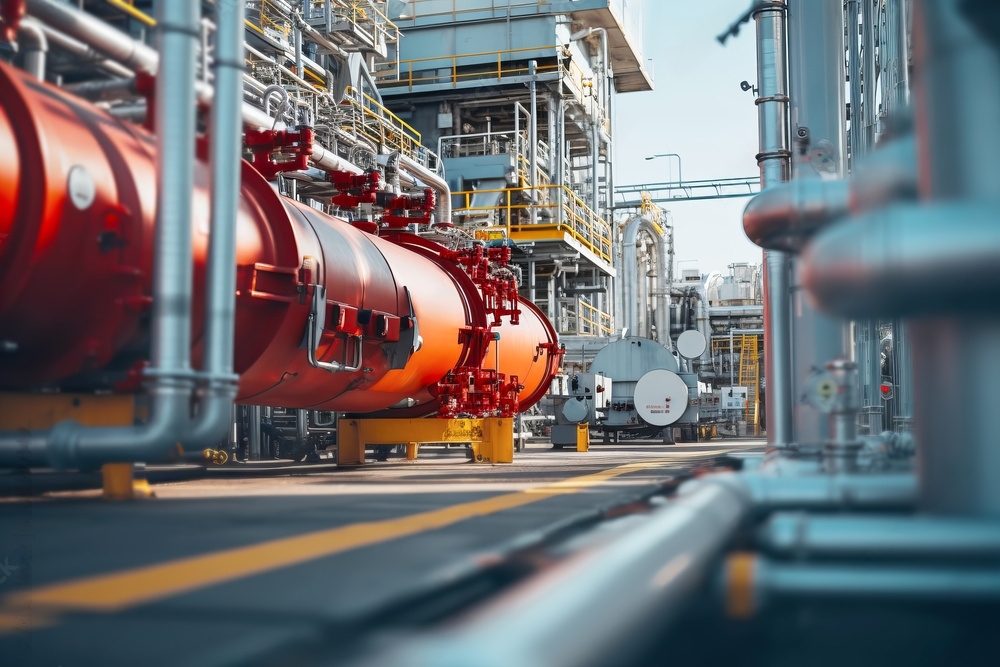- Home
- Courses
Chemical, Oil & Gas Industry Piping
Design

- ✔️ Understand the principles and practices of piping design for oil, gas, and chemical industries
- ✔️ Apply relevant industry codes and standards (e.g., ASME, API, ANSI) to the design of piping systems
- ✔️ Select appropriate materials for different piping applications in harsh environments
- ✔️ Develop piping layouts, including flow diagrams and isometrics
- ✔️ Perform stress analysis of piping systems and design for flexibility and support
- ✔️ Address corrosion, insulation, and safety considerations in piping systems
- ✔️ Design for process safety and risk mitigation, including pressure relief systems
- ✔️ Overview of the oil, gas, and chemical industries: upstream, midstream, downstream
- ✔️ Role of piping systems in industrial processes
- ✔️ Types of piping systems (transport, process, utility)
- ✔️ Key components in piping systems: pipes, valves, pumps, and fittings
- ✔️ Introduction to major piping standards and codes: ASME B31.3, API 570, ANSI, ISO
- ✔️ Basic principles of piping design
- ✔️ Material selection for different piping applications
- ✔️ Common piping materials: carbon steel, stainless steel, alloys, and non-metals
- ✔️ Material properties: strength, ductility, and corrosion resistance
- ✔️ Effects of corrosion and methods of corrosion prevention (coatings, inhibitors, cathodic protection)
- ✔️ Selecting materials based on pressure, temperature, and fluid type
- ✔️ Case study: Material selection for a chemical reactor system
- ✔️ Detailed overview of ASME B31.3 (Process Piping), ASME B31.4 (Pipeline), ASME B31.8 (Gas Transmission), and API standards
- ✔️ Codes for pipe supports, hangers, and expansion joints
- ✔️ Pressure testing and inspection requirements
- ✔️ Specifying piping materials, sizes, and pressure ratings
- ✔️ Application of ANSI, ASTM, and API codes in the design of piping systems
- ✔️ Case study: Compliance with ASME B31.3 in an oil refinery
- ✔️ Piping layout design: factors influencing routing, space constraints, and process requirements
- ✔️ Designing for easy maintenance and safety
- ✔️ Flow design: straight runs, elbows, tees, and connections
- ✔️ Considerations for equipment and piping access
- ✔️ Designing for thermal expansion and contraction
- ✔️ Use of P&ID and PFD in piping system layout
- ✔️ Piping isometric drawings and construction details
- ✔️ Introduction to piping stress analysis
- ✔️ Types of stresses: thermal, pressure, and mechanical
- ✔️ Pipe supports and anchors: types, location, and selection
- ✔️ Expansion loops, offsets, and guides for thermal expansion
- ✔️ Stress analysis tools and methods: Manual calculations vs. CAESAR II or similar software
- ✔️ Application of flexibility in design to reduce stress and fatigue
- ✔️ Case study: Stress analysis of a high-temperature chemical pipeline
- ✔️ Importance of pipe supports in ensuring safe operation
- ✔️ Types of supports: fixed, spring, adjustable, and friction-type
- ✔️ Design considerations for hangers and bracing systems
- ✔️ Methods for calculating the number and type of supports required
- ✔️ Impact of pipe supports on stress and system flexibility
- ✔️ Case study: Designing a support system for an offshore pipeline
- ✔️ Fabrication processes for piping systems
- ✔️ Types of welding: butt welding, socket welding, and flanged connections
- ✔️ Welding standards and quality control (e.g., NDT, visual inspection, radiographic testing)
- ✔️ Importance of welding procedures and safety practices
- ✔️ Material handling and preparation for welding
- ✔️ Case study: Welding considerations for a chemical plant piping system
- ✔️ Introduction to process safety management and risk analysis
- ✔️ Pressure relief and safety systems in piping design
- ✔️ Designing for overpressure protection: PSVs, PRVs, and rupture discs
- ✔️ Calculating required relief valve sizes based on flow rate and pressure conditions
- ✔️ Incorporating safety devices into P&ID and piping layout
- ✔️ Case study: Pressure relief system for a high-pressure gas pipeline
- ✔️ Importance of thermal insulation for hot and cold piping systems
- ✔️ Types of insulation materials and their applications
- ✔️ Design considerations for fireproofing and passive fire protection in piping systems
- ✔️ Designing for temperature extremes: hot oil pipelines, steam lines
- ✔️ Reducing heat loss and energy efficiency in piping systems
- ✔️ Case study: Insulation design for a steam distribution system
- ✔️ Special considerations for offshore and subsea pipeline design
- ✔️ Offshore pipeline materials, corrosion protection, and installation techniques
- ✔️ Subsea pipeline routing and installation methods
- ✔️ High-temperature piping systems: material selection and thermal management
- ✔️ Design for subsea risers, flowlines, and umbilicals
- ✔️ Case study: Design of a subsea pipeline for an oil production platform
- ✔️ Maintenance practices for oil, gas, and chemical piping systems
- ✔️ Routine inspection and testing methods: pressure testing, leak detection, and integrity assessment
- ✔️ Common piping issues: corrosion, vibration, fatigue, and leakage
- ✔️ Troubleshooting piping system failures
- ✔️ Case study: Maintenance and troubleshooting of a refinery pipeline
- ✔️ Performance optimization and retrofit of piping systems
- ✔️ Group project: Design a piping system for a chemical process (including material selection, layout, stress analysis, and safety considerations)
- ✔️ Review of course concepts and practical applications
- ✔️ Final exam: Piping system design, stress analysis, material selection, and code compliance
- ✔️ Course wrap-up and feedback

